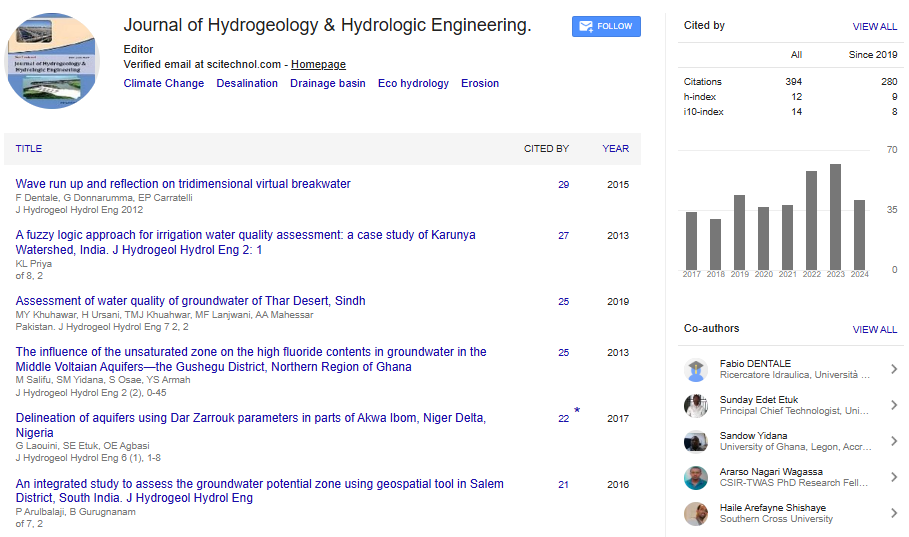Research Article, J Hydrogeol Hydrol Eng Vol: 8 Issue: 5
Lake Monitoring from a Combination of Multi Copernicus Missions: Sentinel-1 A and B and Sentinel-3A
Shirzad Roohi1,3, Arash Amini2, Behzad Voosoghi2* and Douglas Battles3
1Copernicus Mission Division, Sentinel-6/Jason-CS mission, Eumetsat, Darmstadt, Germany
2Department of Geodesy and Geomatics Engineering, K N Toosi University of Technology, Tehran, Iran
3HE Space Operations GmbH, Darmstadt, Germany
*Corresponding Author : Behzad Voosoghi
Faculty of Geodesy and Geomatics Engineering, K. N. Toosi University of Technology, Tehran, Iran
E-mail: vosoghi@kntu.ac.ir
Received: October 28, 2019 Accepted: December 10, 2019 Published: December 27, 2019
Citation: Roohi Sh, Amini A, Voosoghi B, Battles D (2019) Lake Monitoring from a Combination of Multi Copernicus Missions: Sentinel-1 A and B and Sentinel- 3A. J Hydrogeol Hydrol Eng 8:3.
Abstract
Monitoring water volume changes of a given lake needs precise estimation of water level and water surface variations. The water level of the lake might be erroneous due to multi reflections, called multi peak waveforms, from the illuminated area inside the radar footprint. Bathymetry data are also not available everywhere to measure the absolute water volume storage.
To derive optimized ranges and consequently more precise water level, corrupted waveforms need to be analyzed. We developed a new approach to select an optimal peak in a given waveform to be retracked with the threshold retracker. We selected a peak, which provides a water level closest to the in situ gauge. In another scenario, we involved all meaningful peaks in a given waveform and considered the average of retracking corrections obtained from all sub-waveforms/peaks.
The water surface of the lake was estimated from analyzing SAR images. To distinguish water from non-water surfaces, the threshold algorithm based on the histogram has been used. The surface time series was validated against external data. Finally, relative water volume changes were estimated from the water level and surface variations according to the Heron method.
In this study, we used L2 and L1b data of Sentinel-3 A SRAL and SAR images from Sentinel-1 A and B from June 2016 to May 2018 to monitor Lake Vänern in Sweden. Our analysis in water level determination shows an improvement of 50% for our novel optimized peak selection method compared to L2 data in front of in situ gauge measurements. We also found that for more than 90% of the waveforms, the first peak, called the first sub-waveform, leads to a better result. The second scenario, i.e. involving all meaningful peaks, called mean-all sub-waveforms, has almost the same performance as the optimized sub-waveform, which shows the effectiveness of this scenario for water level monitoring.
We found a correlation of 97% and 71% for the water level with respect to the water volume and surface variations, respectively. A 78% correlation was achieved for water surface-volume variations. There is also a correlation of 83% and 88% for our water surface and volume variations with respect to that of the Hydroweb database, respectively. An RMSE of 5 cm in water level variation is a significant achievement for the Sentinel-3 SAR altimeters over the inland waters, i.e Lake Vänern.
 Spanish
Spanish  Chinese
Chinese  Russian
Russian  German
German  French
French  Japanese
Japanese  Portuguese
Portuguese  Hindi
Hindi 
